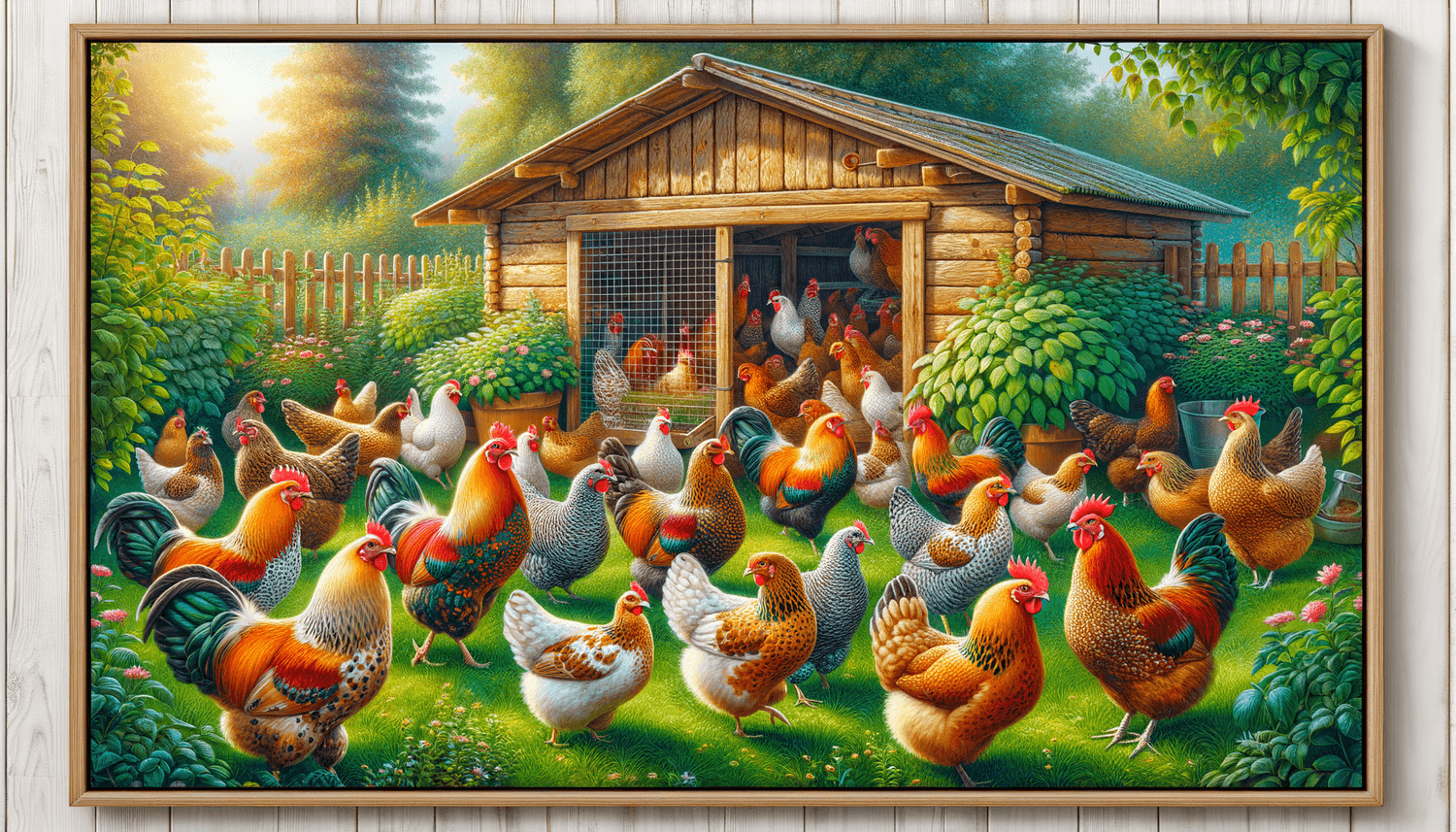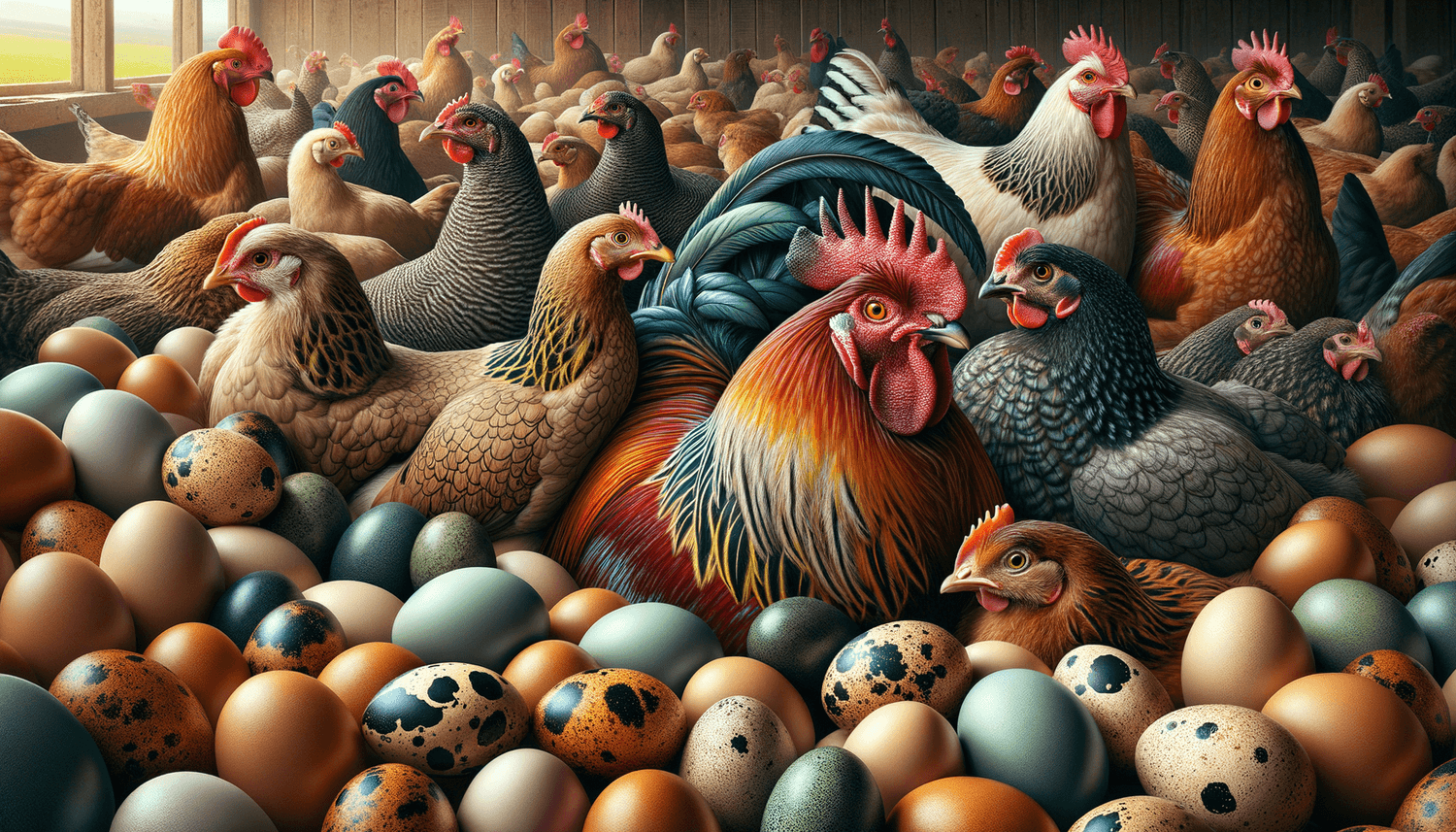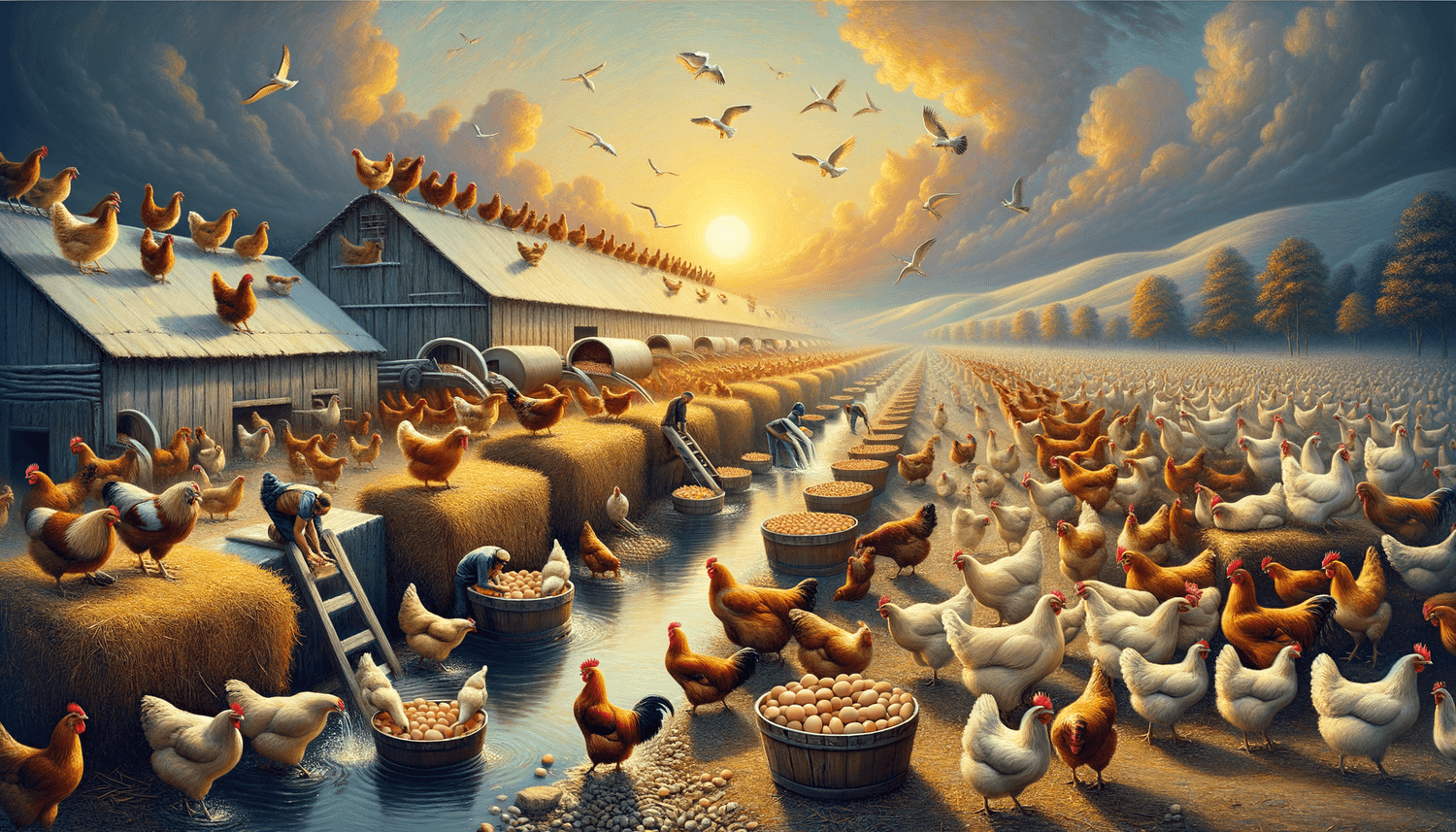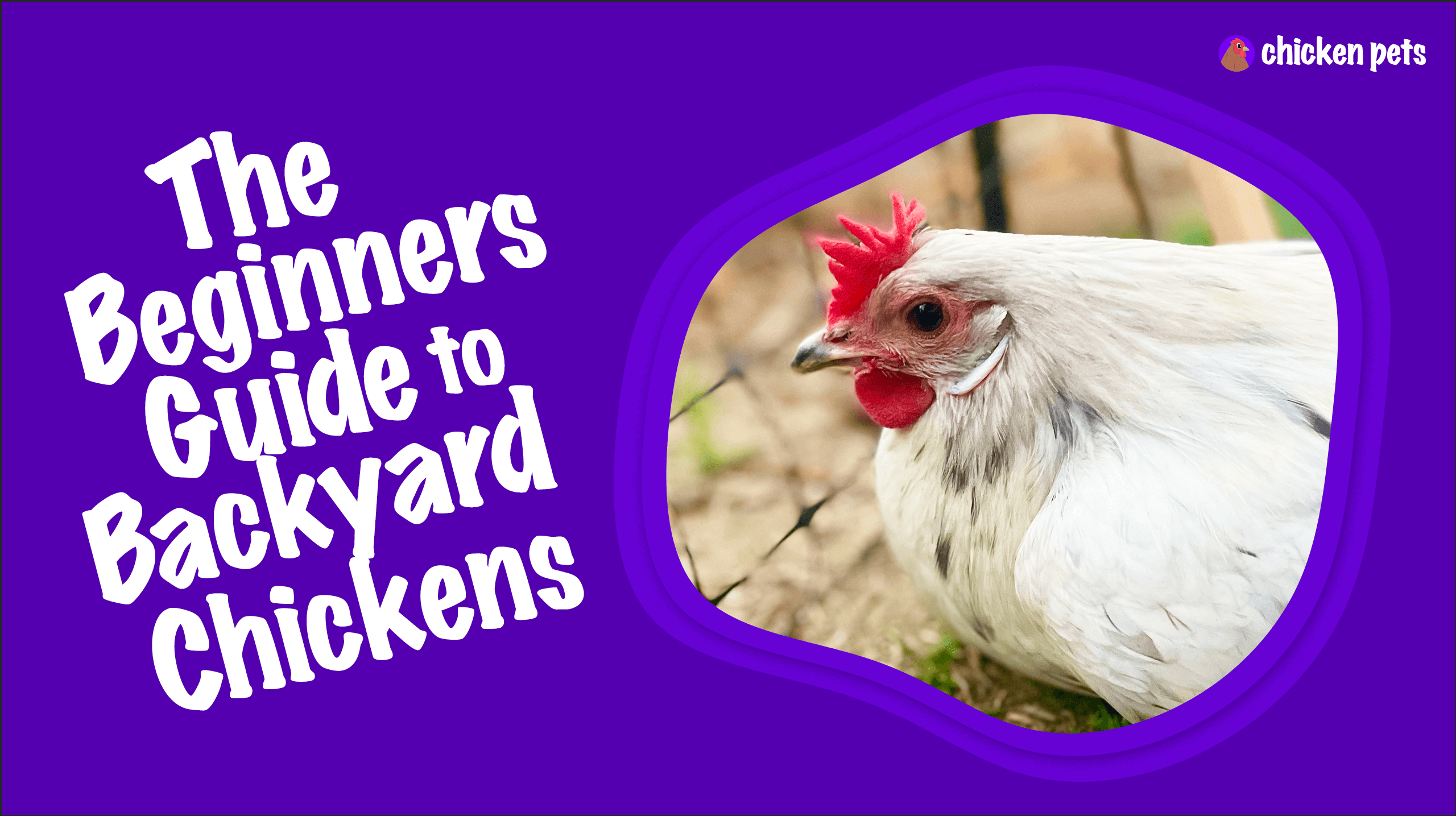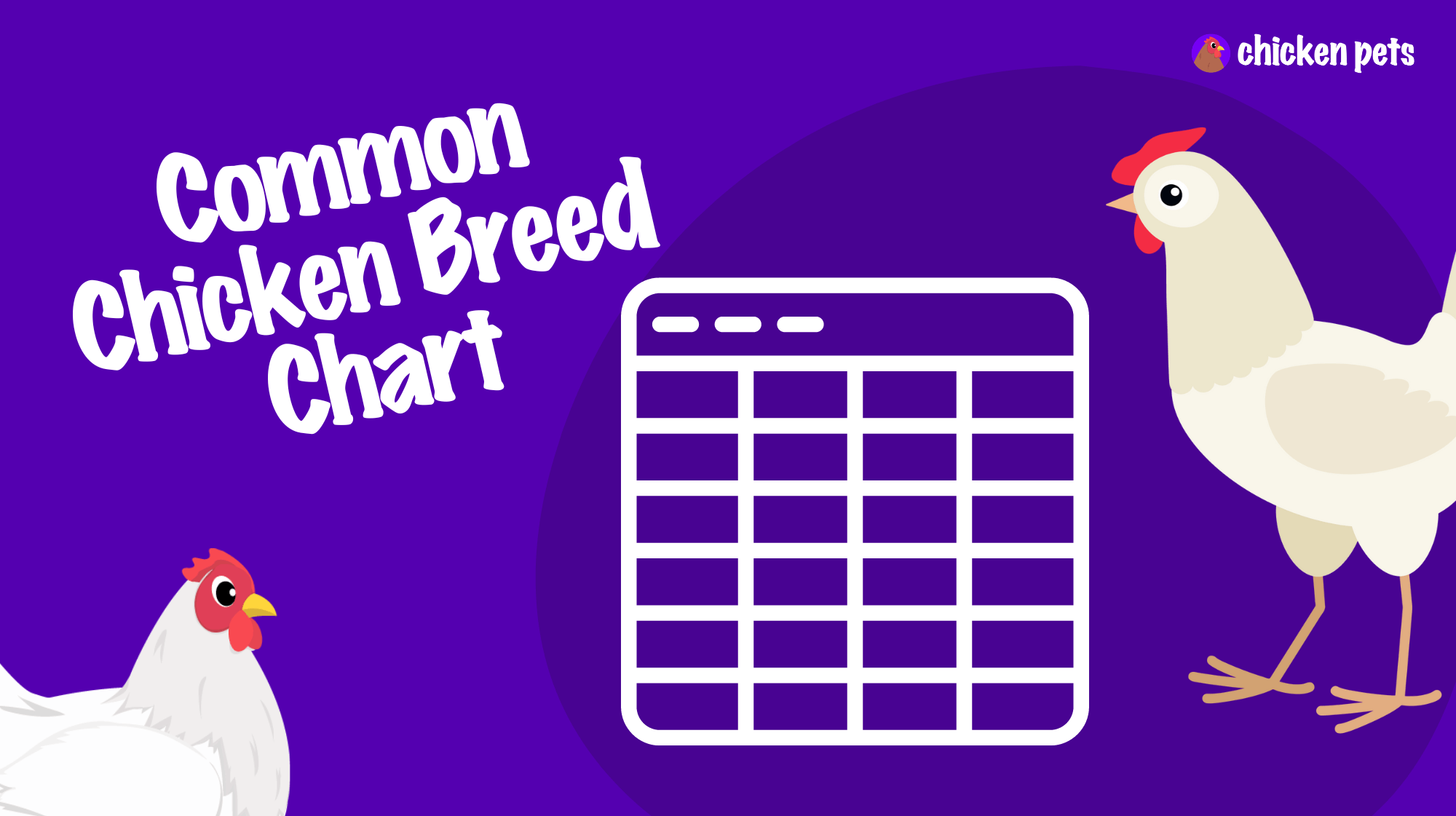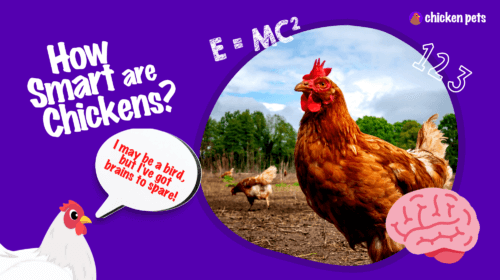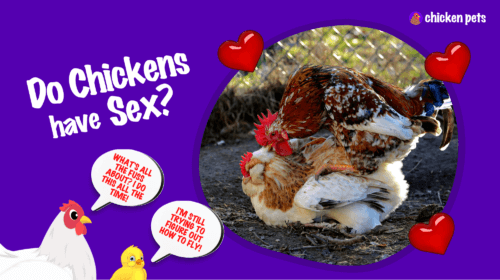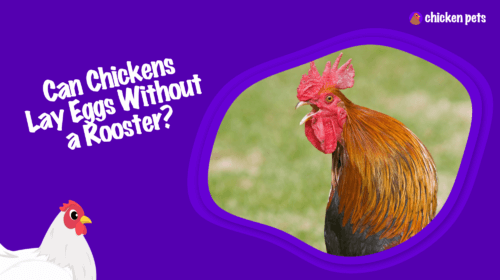Discover the wonders of diatomaceous earth for your backyard chickens! In this blog post, we’ll explore its benefits and uses to keep your feathered friends healthy and happy.
Diatomaceous Earth for Chickens: Benefits and Uses
Diatomaceous earth is a natural and effective way to control parasites in your chicken flock. Additionally, it can be added to dust baths to help keep your chickens clean and enhance their overall well-being.
What is Diatomaceous Earth?
Diatomaceous earth (DE) is a naturally occurring, soft, and sedimentary rock made from the fossilized remains of diatoms – single-celled algae with hard, silica-based, protective shells. DE is commonly found in powder form and is known for its absorbent and abrasive properties, making it an ideal choice for various uses in your backyard chicken’s care.
Benefits of Diatomaceous Earth for Chickens
There are several reasons why diatomaceous earth is a sought-after addition to the backyard coop. Some of the most notable benefits include:
- Parasite Control
- Improved Dust Bathing Experience
- Better Coop Hygiene
- Safer and Affordable Option
Parasite Control with Diatomaceous Earth
One of the primary reasons backyard chicken keepers use diatomaceous earth is to control parasites such as lice, mites, and fleas. These tiny pests can cause discomfort, irritation, and even severe health issues for your flock. Fortunately, diatomaceous earth can help minimize and prevent these infestations by physically damaging these pests by dehydrating them and breaking down their protective coatings.
Using DE for External Parasite Control
Apply food-grade diatomaceous earth directly to your chickens’ feathers, making sure to reach the skin underneath. As chickens groom and preen themselves, the DE will work its magic and help eradicate external parasites. You can also sprinkle it on areas where your chickens sleep, lay eggs, or dust bathe to create an inhospitable environment for these pests.
Internal Parasite Control with DE
Internal parasites like worms can also be a concern for your flock. Adding small amounts of food-grade diatomaceous earth to your chickens’ feed can help deal with these pesky intruders. However, it’s important to note that DE is not a substitute for veterinary care or advice. When in doubt, consult a veterinarian to get the right treatment for your chickens.
Enhancing Dust Baths with Diatomaceous Earth
Chickens naturally love to dust bathe as it helps them keep their feathers in tip-top condition and removes excess oils and dirt. Adding diatomaceous earth to your chickens’ dust bathing area can not only provide them with an enjoyable bathing experience but also help control pests and keep them clean.
Setting Up a DE-Infused Dust Bath
Choose an area in your backyard or coop that is dry and has a size suitable for your flock. Create a mixture of regular dust bathing material (like sand, wood ash or dirt) and food-grade diatomaceous earth, taking care that DE makes up around 10-20% of the mixture. Your chickens will love rolling and playing in the dust bath, and their feathers will look and feel great!
Improving Coop Hygiene with Diatomaceous Earth
Diatomaceous earth can also help maintain a clean and fresh-smelling coop. Its absorbent properties make it effective in absorbing moisture and controlling odors, which is crucial for keeping the chicken coop dry and reducing the risk of diseases and mold growth.
Using DE in Nesting Boxes and Coop Flooring
Begin by cleaning the nesting boxes and coop floor. Once they’re clear of debris and dry, dust the surfaces with a layer of food-grade diatomaceous earth. Remember to reapply DE after cleaning the coop or when it appears worn away to maintain its effectiveness.
Diatomaceous Earth as a Safe and Affordable Alternative
Commercial treatment products for parasites and coop maintenance can sometimes be potentially harmful if not used correctly or contain chemicals that may be undesirable for backyard chicken keepers who want to keep things natural. Diatomaceous earth, on the other hand, is a non-toxic, safer, and more environmentally-friendly option. Plus, it’s also cost-effective and easily accessible, making it a perfect addition to your chicken care toolkit.
Choosing the Right Diatomaceous Earth for Your Flock
Not all diatomaceous earth is created equal, and it’s essential to choose the correct type for your backyard chickens. There are two main types of DE, food-grade and pool-grade, but only food-grade diatomaceous earth should be used for your chickens. Pool-grade DE can be dangerous as it is treated with high heat, which makes it toxic when ingested or inhaled. Always check labels or consult a reputable supplier to ensure you’re using the right kind of DE for your flock.
Precautions and Tips for Using Diatomaceous Earth
While diatomaceous earth is generally safe for your chickens, there are a few precautions you should consider:
- Use food-grade DE exclusively for your chicken care.
- DE can cause respiratory irritation, so make sure to avoid inhaling the fine powder when using it.
- Keep diatomaceous earth dry, as moisture can reduce its effectiveness.
- Monitor your chickens’ health when using DE as an internal parasite treatment and consult a veterinarian if necessary.
Conclusion
Diatomaceous earth offers numerous benefits for backyard chickens, including assisting in parasite control, improving dust baths, and maintaining coop hygiene. By selecting the right product and using it correctly, you can provide a safer, healthier environment for your beloved flock. Happy chicken keeping!
Additional Uses of Diatomaceous Earth in Chicken Care
Diatomaceous earth can also support your chicken care in several other ways. Let’s take a look at these lesser-known uses of DE:
Feed Freshness and Pest Repellent
Adding a small amount of food-grade diatomaceous earth to your chicken feed can help maintain its freshness and even deter pests. DE’s absorbent properties can help keep the feed dry, reducing the growth of mold and spoilage. Moreover, its abrasive nature is generally unwelcoming to insects, meaning they are less likely to infest your stored feed.
Application Tips for Maximum Efficiency
To get the most out of diatomaceous earth, consider these application tips:
- Wear a mask and gloves while handling DE to avoid inhaling the fine particles, which can cause respiratory irritation.
- Apply diatomaceous earth on a dry and wind-free day to ensure maximum efficiency and coverage.
- Start with a conservative amount of DE and gradually increase it based on effectiveness and needs.
- Check your coop regularly to ensure the DE layers are still in place and reapply as needed.
Diatomaceous Earth Alternatives
While diatomaceous earth is an excellent choice for backyard chicken care, it may not be the perfect solution for everyone. If you’re looking for alternatives, consider the following options:
Wood Ash
Wood ash from hardwood species can be used in dust baths and as a bedding material in the coop. It provides a similar abrasive and absorbent effect as diatomaceous earth, making it helpful for controlling pests and improving coop hygiene.
Herbs in the Coop
Adding dried or fresh herbs, such as lavender, mint, or rosemary, to your chickens’ nesting boxes or dust bath can help repel pests, thanks to their natural fragrances. This can be a fun and aromatic way to provide enrichment for your flock while also offering pest control benefits.
Electromechanical Pest Control
If you’re dealing with a particularly persistent infestation, consider using environment-friendly, chemical-free pest control devices such as ultrasonic pest repellents or insect traps during nighttime when your chickens are sleeping.
Conclusion
Using diatomaceous earth in your backyard chicken care offers many benefits, including parasite control and improved coop hygiene. By understanding its uses and taking precautions when applying it, you can create a safe and healthy environment for your flock. Don’t forget to explore alternatives and experiment with different strategies to find the perfect solution for your unique chicken keeping needs. Happy chicken keeping!
Frequently Asked Questions (FAQs)
Below, we’ve compiled a list of some common questions and answers regarding diatomaceous earth and its use in backyard chicken care. Delve into these FAQs to deepen your understanding and clear up any concerns you may have.
1. Can diatomaceous earth harm my chickens?
When used correctly, food-grade diatomaceous earth is considered safe for your chickens. However, it is important to avoid excessive amounts or using the wrong type (e.g., pool-grade DE), as it could be harmful.
2. Can I use diatomaceous earth on chicks?
It is generally safe to use food-grade DE on chicks for pest control and dust baths. However, use it sparingly and monitor their reactions closely to avoid any complications.
3. Does diatomaceous earth kill all types of chicken parasites?
While diatomaceous earth can help control various external parasites, such as lice, mites, and fleas, it may not be effective against all species or stages of these pests. Additionally, its effectiveness against internal parasites is limited, so always consult a veterinarian for persistent issues.
4. How often should I use diatomaceous earth in my chicken coop?
There is no fixed rule for how often you should apply diatomaceous earth; it largely depends on your coop’s condition and presence of pests. You can reapply DE after cleaning the coop or when the existing layer appears to be worn away.
5. Can diatomaceous earth be used in their water?
No, diatomaceous earth should not be mixed with your chickens’ water because it loses its effectiveness when wet, and it can potentially clog water dispensers.
6. Does applying DE to my chickens prevent all types of diseases?
Although diatomaceous earth can help control pests and maintain coop cleanliness, it is not a guarantee against all types of diseases. Ensuring your chickens have appropriate nutrition, a clean environment, and regular healthcare checks are vital for their overall well-being.
7. Can I eat eggs from chickens treated with diatomaceous earth?
Yes, eggs from chickens treated with food-grade diatomaceous earth are considered safe for consumption. DE does not have any known harmful effects when ingested in small amounts.
8. How long does diatomaceous earth take to kill pests?
Diatomaceous earth’s effectiveness can vary depending on the type and life stage of the parasite, as well as the amount of DE used. While DE may start working immediately upon contact with the pests, it might take a few days to see the full effect.
9. Can diatomaceous earth be used with other pest control methods?
Yes, diatomaceous earth can be used in conjunction with other natural pest control methods, such as herbs, ash, or pest repellent devices. However, ensure that the combined methods are safe for your chickens and do not result in overexposure to potentially harmful substances.
10. Is DE the same as bentonite clay or Fuller’s Earth?
No, diatomaceous earth, bentonite clay, and Fuller’s Earth are not the same. While all three are natural, absorbent materials, they differ in their composition, properties, and applications. Diatomaceous earth comes from fossilized diatoms, bentonite clay is derived from volcanic ash, and Fuller’s Earth is a type of clay known for its absorbent and cleansing abilities.
11. What color should diatomaceous earth be?
Diatomaceous earth can range in color from white to off-white, beige, or brown, depending on its source and composition. The color does not affect its effectiveness in chicken care, but always ensure you’re using food-grade DE.
12. Can diatomaceous earth lose its effectiveness over time?
Diatomaceous earth, when stored in a cool, dry place, has an indefinite shelf life and should remain effective. However, its effectiveness can be diminished if it becomes wet or mixed with other substances that reduce its abrasive properties.
13. Can other animals, like dogs and cats, benefit from diatomaceous earth?
Yes, food-grade diatomaceous earth can also benefit other animals, like dogs and cats, by helping control parasites and improving their overall health. Ensure to follow the appropriate dosage and application guidelines for each specific animal to ensure safe and effective use.




